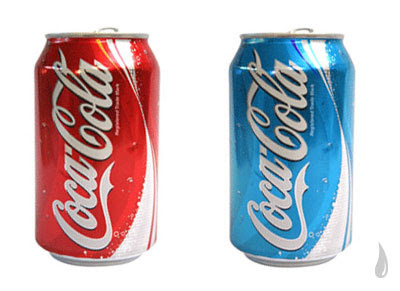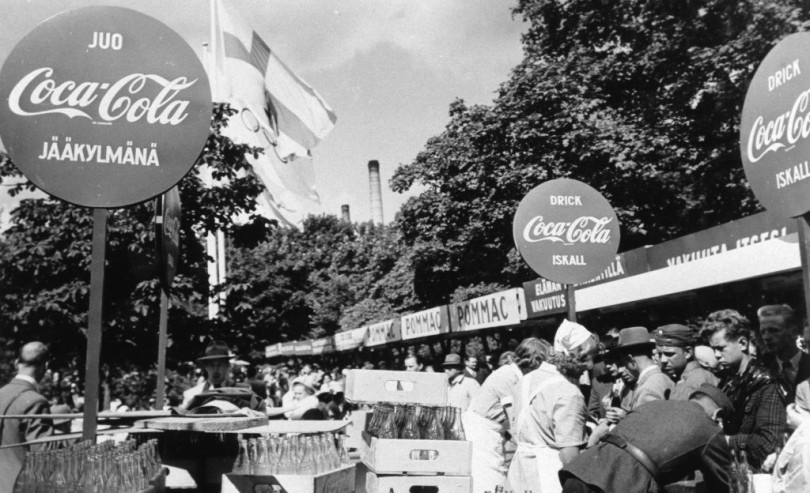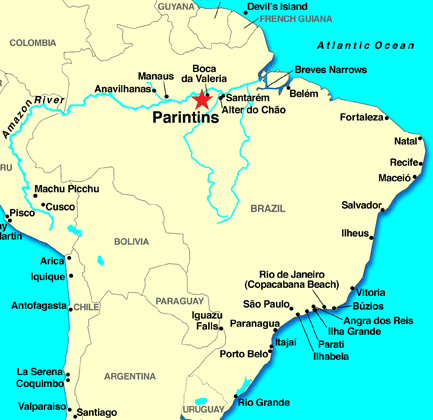
Yes, that blue can is real, and no, it is not an exotic flavor like blueberry. It is the good old Coke. That can have been around since 2005 and is the perfect example of a global company going local and nailing it!
The Coca-Cola Company is one of the epitomes of globalization. It began building its global network in the 1920s and now operates in more than 200 countries offering nearly 450 brands.
Robert W. Woodruff, Coca-Cola’s president from 1926 to 1954, had a clear vision, he wanted to put Coca-Cola within an arm’s reach of desire. To achieve his vision, he committed the company to foreign expansion by establishing an international department and partnering with the Olympic Games.
Coca-Cola and the Olympic Games began their association in the summer of 1928 when an American freighter arrived in Amsterdam carrying the United States Olympic team and 1,000 cases of Coca-Cola. Forty thousand spectators filled the stadium to witness two firsts: the first lighting of the Olympic flame and the first sale of Coke at an Olympiad. That moment can be considered the stepping stone on which Coca-Cola built its barrierless brand. Now, Coca-Cola is the most ubiquitous consumer product in the world.

Ok, let’s get to Brazil! Coca-Cola arrived in Brazil in 1941 aiming to serve the US Army troops stationed in Recife, Pernambuco. In 1942 the first factory was inaugurated in Rio de Janeiro. By now Coca-Cola Brasil and its 17 independent agents, called authorized manufacturers, work in 41 industrial units and distribute to thousands of selling points. This structure absorbs approximately 34.000 direct employees and generates more than 310.000 indirect jobs.
After 60 years of a more than successful presence in Brazil, a small town called Parintins caught the eye of Coca-Cola’s management team.

Situated in the north of Brazil and 420 kilometers far from the nearest hub airport, Parintins, 100.000 inhabitants, holds an annual festival whose theme is a folk story describing the clash of two bulls, Caprichoso and Garantido.
The Parintins’ bulls are recognized as one of the main Brazilian cultural expressions. The festival, which brings to the arena regional symbolisms that represent the indigenous peoples and the northern riverside settlers, became popular, and by the early 2000s was already attracting almost 100.000 tourists.
Coca-Cola started sponsoring the festival in 1995. Year after year sales under-performed without no apparent reason. Almost a decade later the company observed an interesting phenomenon. Caprichoso and Garantido had their own fan base, and those fans were devoted! Not only the city but the whole region was divided in two.
The rivalry was so intense that one group avoided anything that even resembled the other, and that was a problem for Coca-Cola. The thing is, colors identify the bulls, Caprichoso’s color is blue and Garantido’s is red. Because of that, Caprichoso’s fans were refusing to buy Coke altogether and favoring Coca-Cola’s nemesis: Pepsi.
Pepsi never had selling rights for the festival days because Coca-Cola is a master sponsor, but people were still going out of their way in order to buy one. That was no easy feat; they had to look for smaller vendors and prices were considerably higher than a Coke can.
Coca-Cola could not let it lie. In 2005 it made an unprecedented decision, Coca-Cola adapted its brand to appeal to the other half of Parintins. The blue Coke can was born, and it was a huge success. Brazilians always perceived Coca-Cola as more exquisite when compared to any other soft drinks brand, so now was a no-brainer. Coke’s sales skyrocketed.
Think global, act local.








